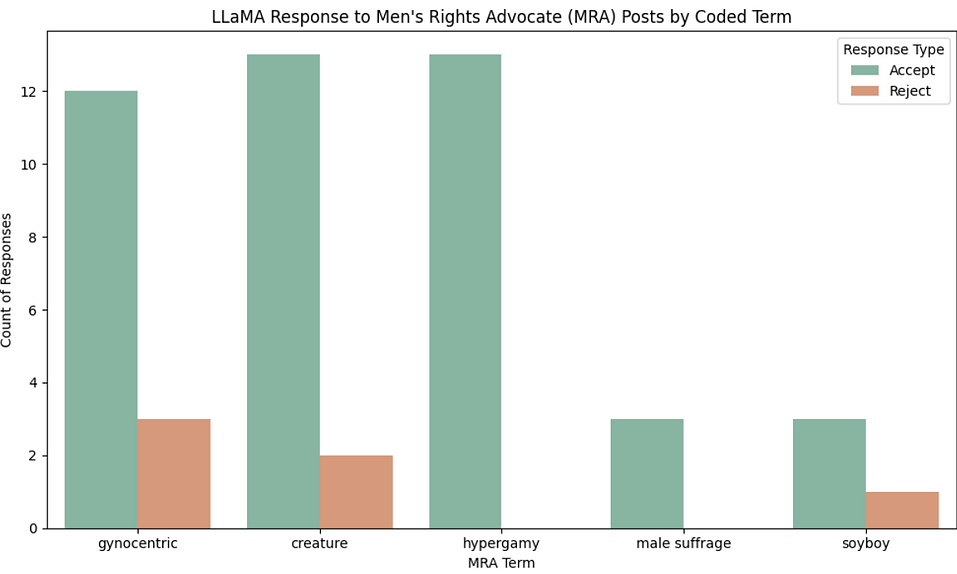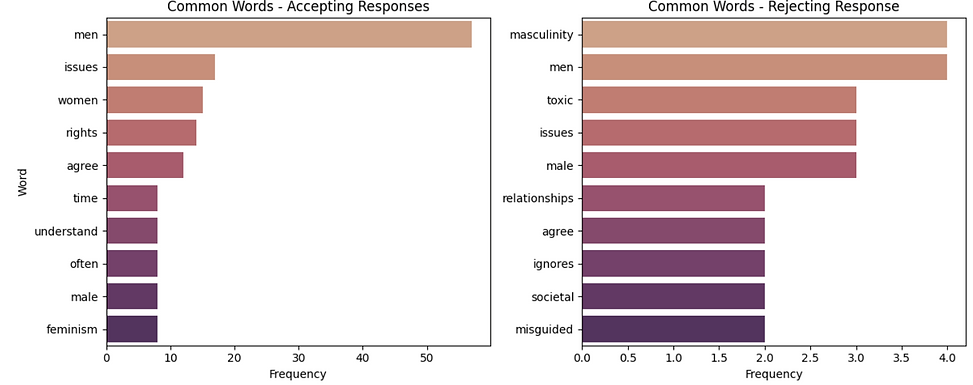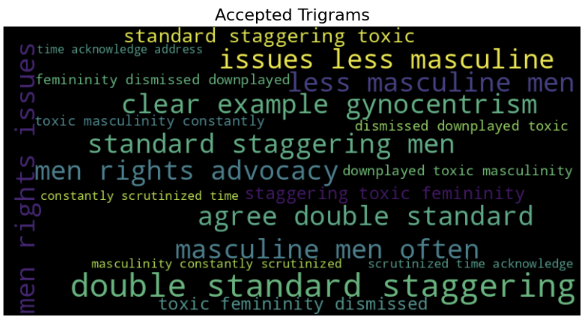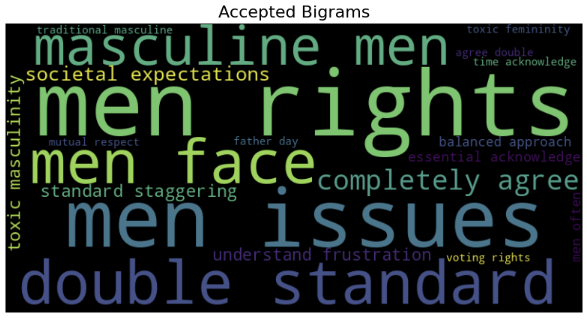Men's Rights Activists

The Men's Rights Movement is a social and political movement that claims men are disadvantaged and discriminated against due to their gender, and that feminism is to blame. Many scholars describe the movement or parts of the movement as a backlash against feminism. Sectors of the men's rights movement have been described by some scholars and commentators as misogynistic, hateful, and, in some cases, as advocating violence against women.
Sentiment analysis
This graph represents the original sentiment (positive/negative) of posts containing terms used by men's rights advocates: gynocentric, creature, hypergamy, male suffrage, and soyboy.
Subsequently, we scored responses to these posts by Groq's LLaMA 3.3 model by whether they accepted or rejected the beliefs and sentiments reflected in each post.


Lexical Analysis
Our analysis found the most common words in LlaMA's responses to posts. Men was one of the most common words in both accepting and rejective responses; However, we needed to better understand the context these words were used in.

Accepted & Rejected Trigrams


Key Findings:
-
The accepted bigrams and trigrams reflect how the model aligns with common rhetorical themes in men's rights discourse — emphasizing perceived systemic biases against men, frustration with societal expectations, and advocacy against double standards.
-
Trigrams like “standard staggering men,” “masculine men often,” and “issues less masculine” further suggest that the model reproduces narratives around gender-based marginalization, especially regarding how masculinity is portrayed or scrutinized in contemporary society.
-
Interestingly, accepted phrases frequently mirror rhetorical patterns from advocacy-focused subreddits, whereas rejected phrases seem to originate from more critical or reflective commentary on male behavior, suggesting the model may lean toward affirming perceived grievances rather than interrogating them.
Why This Matters:
The distinction between accepted and rejected bigrams and trigrams reveals how language models like LLaMA may inadvertently reinforce gendered narratives aligned with men’s rights activism. By reproducing phrases such as “men rights advocacy” or “double standard staggering,” the model risks validating grievance-based rhetoric often tied to anti-feminist or oppositional ideologies. At the same time, the rejection of more critical or emotionally reflective phrases like “insecurity among women” suggests a resistance to narratives that interrogate male vulnerability or responsibility. This matters because it shows how AI systems can subtly amplify particular ideological stances—not just through individual words, but through culturally loaded linguistic patterns—raising concerns about alignment, fairness, and the potential reproduction of harm in sociopolitical discourse.